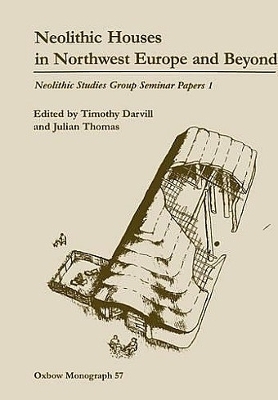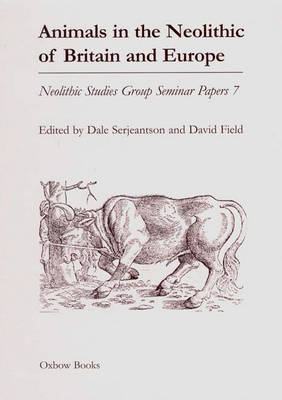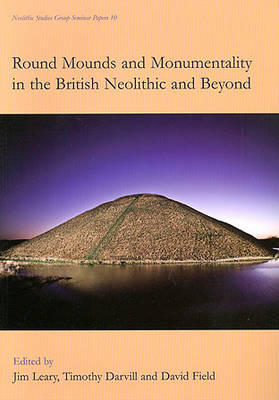Neolithic Studies Group Seminar Papers
3 primary works
Book 1
Neolithic Houses in Northwest Europe and beyond
by Timothy Darvill and Julian Thomas
Published 1 December 2002
The first ever publication of the Neolithic Studies Group, containing papers on the `structures' of Neolithic Europe.Contributions include: Neolithic houses in mainland Britain and Ireland - a sceptical view (Julian Thomas); Houses in context: Building as process (Alasdair Whitlle); A Central European Perspective (Jonathon Last); Neolithic houses in Ireland (Eoin Grogan); Neolithic buildings in Scotland (Gordon Barclay); Neolithic buildings in England, Wales and the Isle of Man (Tim Darvill); Mesolithic or later houses at Bowmans Farm, Romsey Extra, Hampshire (Francis Green); Ballygalley houses, co.Antrim (Derek Simpson); Later Neolthic Structires at Trelystan, Powys (Alex Gibson); Life, times and works of House 59, Tell Ovcharovo, Bulgaria (Douglass Bailey); Structure ans ritual in Neolithic houses (Peter Topping); Architecture and Cosmology in the Balinese house: life is not that simple (Colin Richards); Houses in the Neolithic imagination: an Amazonian Example (Christine Hugh-Jones).
Book 7
Animals in the Neolithic of Britain and Europe
by Dale Serjeantson and David Field
Published 31 August 2015
The twelve papers in this edited volume originated from the Neolithic Studies Group seminar held at the British Museum on 10th November 2003 on the subject of Animals in the Neolithic. This book includes most of the papers delivered and debated at the meeting and others contributed later. The aim of the book is to cover the range of current approaches to animals in the Neolithic, and to encompass as wide a geographical scope as possible in Europe. In particular, it is attempted to ensure that both wild and domestic animals are discussed and that their social as well as economic roles are given appropriate attention. Umberto Albarella, a discussant at the meeting in 2003, has rounded off the volume with a commentary and discussion on the papers which puts them into the perspective of changing views of animals in the Neolithic of Europe.
Book 10
Round Mounds and Monumentality in the British Neolithic and Beyond
by Timothy Darvill and David Field
Published 10 July 2010
This volume, the tenth published collection of seminar papers from the Neolithic Studies Group, is based upon a conference that took place at the British Museum in November 2008. The meeting aimed to consider the chronology and development of Neolithic round mounds; their changing form and use; their relationships to contemporary cultural, ancestral and natural landscapes; the extent to which they provide scope for identifying local and regional social organization; and, not least, why they were round. Following the conference, further papers were offered for this edited volume, widening and broadening the initial discussion.
The papers are arranged in rough geographic order starting in the north and working southwards before heading across the Irish Sea and then the Atlantic. Following a wide-ranging discussion of round mounds across the world, two papers discuss aspects of Scottish round mounds, before moving down to the Isle of Man, the Neolithic round mounds of the Yorkshire Wolds, Liffs Low in the Derbyshire Peak District, and round mounds on the Cotswolds. The volume then moves to Wessex, starting with a discussion of Silbury Hill, and followed by a re-evaluation of the Great Barrow at Knowlton, Conquer Barrow at Mount Pleasant, and the Hatfield Barrow at Marden. How archaeologists and heritage managers choose to interpret round mounds is the subject of the next paper, using Silbury Hill as the primary case study. This is followed by a broad discussion of circular traditions, particularly formative henges, in Wales and adjacent counties, round burial mounds in the Boyne Valley, Ireland, such as Knowth, Dowth and Newgrange, and Irish round mounds containing portal tombs. By way of comparison with the evidence from the British Isles, the volume then crosses over to North America for a broad discussion of mound-building traditions there. Rounding off the volume is another wide-ranging essay on the nature of round mounds, which challenges our very understanding and interpretation of them.
The papers are arranged in rough geographic order starting in the north and working southwards before heading across the Irish Sea and then the Atlantic. Following a wide-ranging discussion of round mounds across the world, two papers discuss aspects of Scottish round mounds, before moving down to the Isle of Man, the Neolithic round mounds of the Yorkshire Wolds, Liffs Low in the Derbyshire Peak District, and round mounds on the Cotswolds. The volume then moves to Wessex, starting with a discussion of Silbury Hill, and followed by a re-evaluation of the Great Barrow at Knowlton, Conquer Barrow at Mount Pleasant, and the Hatfield Barrow at Marden. How archaeologists and heritage managers choose to interpret round mounds is the subject of the next paper, using Silbury Hill as the primary case study. This is followed by a broad discussion of circular traditions, particularly formative henges, in Wales and adjacent counties, round burial mounds in the Boyne Valley, Ireland, such as Knowth, Dowth and Newgrange, and Irish round mounds containing portal tombs. By way of comparison with the evidence from the British Isles, the volume then crosses over to North America for a broad discussion of mound-building traditions there. Rounding off the volume is another wide-ranging essay on the nature of round mounds, which challenges our very understanding and interpretation of them.


